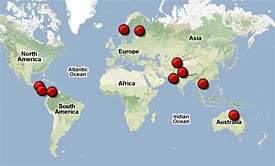World 🢖 Asia 🢖 India 🢖 Uttarakhand
Places with meteorological phenomena 🢔 Legendary wonders 🢔 Categories of wonders
Wonder
Roopkund – Skeleton Lake
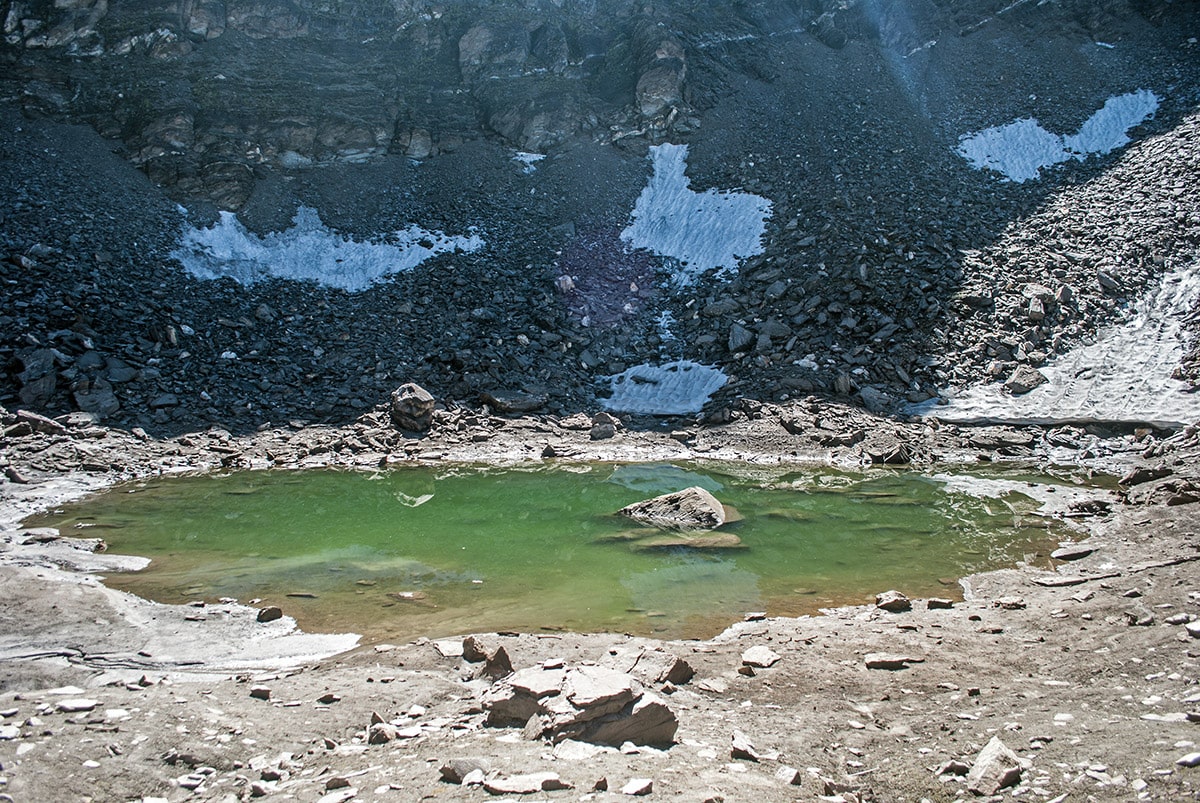
 In short
In short
There is a mysterious lake in the magnificent Gharval Himalaya – Roopkund. For more than 1000 years around the lake lie several hundreds of dead people which most likely died in an extreme hailstorm.
 39.7%
39.7%
GPS coordinates
Alternate names
Map of the site
If you see this after your page is loaded completely, leafletJS files are missing.
 In detail
In detail
Lake of reflections
Roopkund is a small glacial lake in an unexpected location – in a mountain pass, in the saddle between two peaks. Information about the elevation of this lake is controversial: some sources state that the lake is located at 5,029 m height, some – that lake itself is located 4,778 m above the sea level and the nearby Chandinakat peak is 5,023 m high.
For long months this shallow lake is frozen. It is beautiful but there is also some menacing feel in this nearly lifeless place.
Himalaya is extremely rich with legends and the area of Roopkund is not an exception. According to one legend, Nanda Devi and Shiva passed by this area after a successful fight with demons. Nanda Devi wanted to quench her thirst and Shiva created this lake for her. When Nanda Devi bent over the lake, she could see her clear and beautiful reflection – thus the lake got name "Roopkund" (form/shape lake).
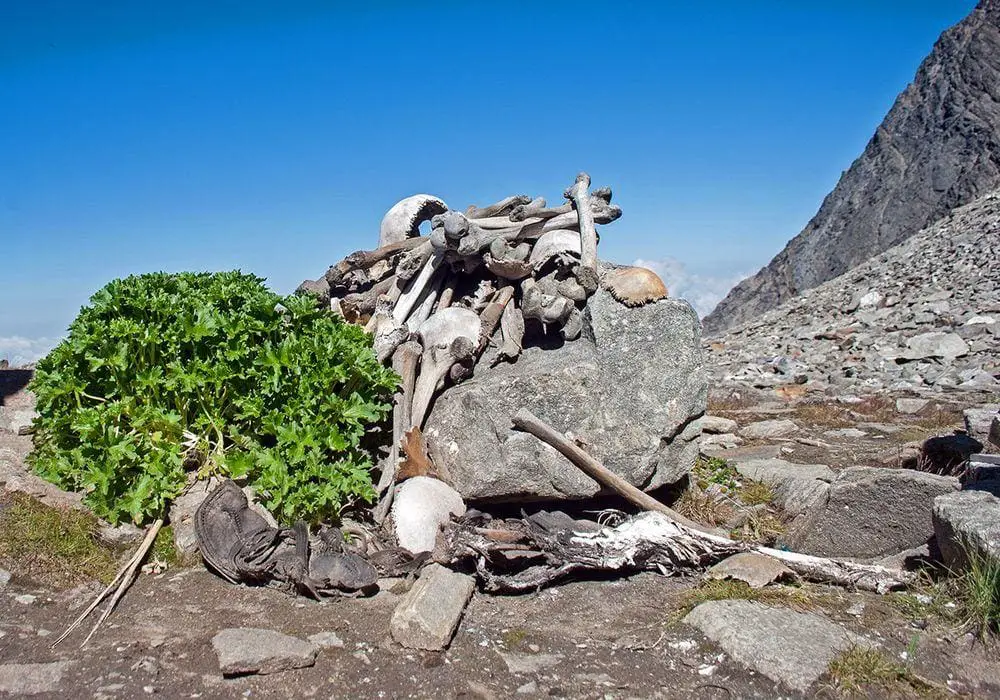
Lake of skeletons
In the summer, as the Sun melts the ice around the lake, there opens dreadful sight – bones and skulls of people and horses lying around the lake.
It is not fully clear whether local people knew about this in earlier times or not – but first written reports appear in 1898. In 1942 a ranger of Nanda Devi game sanctuary (now this is a national park) H.K.Madhwal reported about the bones and flesh seen in melting ice and this arose disquiet among military personnel fearing of surprise attack of the Japanese army.
Low temperature, rarified and clean air helped to preserve the bodies of the deceased better than it would happen elsewhere. As the ice melts (nowadays it melts more than before), even flesh is revealed. Ice and landslides have pushed some bones in the lake.
Earlier there were a lot more bones but it seems, that bones and skulls are picked up by passers-by in order to have a ghastly keepsake from this unusual place and nowadays there are far fewer bones visible.
In total here died up to 600 people (thus far identified at least 500 bodies). Initially, researchers were not sure about the reasons for death. Some attributed this to blizzards, in concordance with local legends. Some considered that these people could die from landslides, epidemics (ie. locals brought their deceased ones there after epidemics), or even mass suicide.
Late research with radiocarbon tests shows that these people died sometimes around 850 AD (research was done at Oxford University Radiocarbon Accelerator Unit, accuracy +/- 30 years). Analysis of skulls performed in Pune, Hyderabad, and London led to a surprising find – turned out that these people most likely died of a sudden hailstorm. Hailstones in this region might become as large as cricket balls (ie. 7 cm diameter). Thus during one such terrible storm large group of people died here without finding safe shelter. Some examined skulls were fractured but some even had holes. Injuries were seen mostly in the upper part of skulls, while other bones were less damaged. This most likely was caused by blunt, hard objects falling from above.
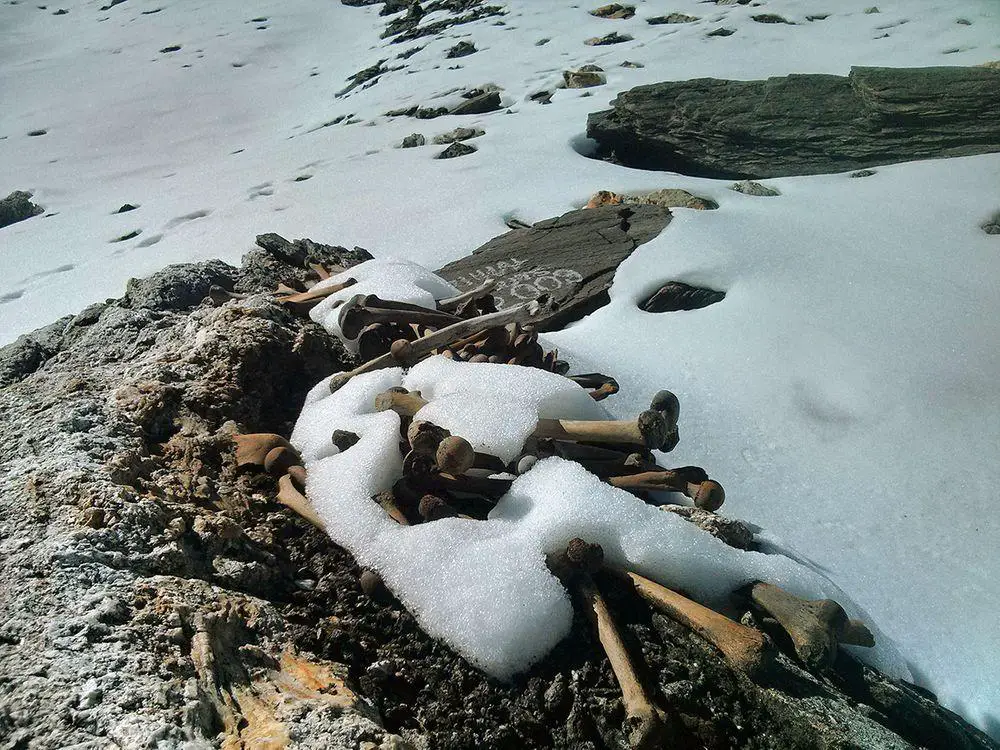
Further analysis shows that there were rather diverse people. DNA analysis hints at specific mutations observed in people living in Maharashtra (at Roopkund were found family members of Kokanastha Bramins) as well as few local people. There were found children, women. The analysis shows that these people for weeks were walking without proper food.
Here have been found even pieces of clothing, glass beads (ie. women were present), ring, spear.
Legendary royal piligrims
Local legends have the following explanation:
A king of Kannauj (ancient land south of Gharval Himalaya) Jasdhawal was on an important pilgrimage to praise the Goddess Nanda Devi. Somehow he disregarded the advice of religious counselors and behaved in an arrogant way.
King took all his entourage with him including numerous dancer girls, musicians, servants. Also, his pregnant wife was with him. As they reached Roopkund lake, the queen delivered a child in a cave near the lake (Wondermondo: interesting – could it serve as a shelter for a few people during the hailstorm?).
Goddess Nanda Devi disliked the fact that dancers and musicians entered her sacred land – local customs strictly forbade it. But the worst violation was childbirth on sacred land: according to local customs newborns and their mothers are considered to be unclean for a certain period of time.
Thus Goddess sent a terrible storm on poor pilgrims and they all were killed on spot.
This legend is well known in Himalaya and there is even a traditional song mentioning this event – this song mentions exactly hailstones "hard as iron" raining on the heads of sinners.
Nanda Devi shrine
But there is another myth that needs to be busted. Often it is said that it is absolutely incomprehensible why these hundreds of people were in this particular place because there are no trade or pilgrimage routes.
This is not true. Gharwal Himalaya is home to ancient religion which seems to have its roots in the very ancient worldwide cult of Great Goddess. This is the Nanda Devi cult. In later times it was embraced by the Hindu religion, placing the ancient goddess in the Hindu pantheon, but many local people follow the rites of the original ancient religion up to this day.
Roopkund is located on pilgrimage way leading to one of the most important Nanda Devi shrines. Such shrines have little in common with the later magnificent structures, these ancient shrines for most times are just places, where, for example, opens important view and where, according to legends, important events of religious character have taken place.
Still, approximately once per 12 years Roopkung is passed by groups of local people heading to one such shrine – they are attending in Nanda Devi Raj Jat festivity (next might happen in 2012, but we will see, if the needed attribute – four-horned ram will be born then). This festivity takes place in numerous places in the Kumaon region, but, according to legends, Roopkung in the past was a very important religious site, which nowadays is overshadowed with the more famous Hemkund 50 km to the north.
Thus we might assume that somewhere around 850 AD here was killed a large group of local and foreign pilgrims heading towards the Nanda Devi shrine. There really were women and children in this group but, judging from analysis, they were not having a fun time but rather starving for several weeks.
A note to collectors of bones
This is directed to those airy tourists who pick up occasional bones around Roopkund Lake:
Collecting bones of dead people as souvenirs is a very bad habit. Collecting bones of pilgrims reportedly killed by the Great Goddess for their sins seems to be an even worse idea. Look at some horror movies and think about it.
References
- Harshwanti Bisht. Tourism in Garhwal Himalaya With Special Reference to Mountaineering & Trekking in Uttarkashi and Chamoli District. 1994. Indus Publishing Company, New Delhi. ISBN 8173870063.
- William Sturman Sax. Mountain Goddess: Gender and Politics in a Himalayan Pilgrimage. Oxford University Press. ISBN 019506979X.
Roopkund – Skeleton Lake is included in the following article:
 Linked articles
Linked articles

Wonders of India
India is the seventh-largest country in the world by area, and, naturally, such a large area contains a huge amount of exciting attractions…
Wondermondo considers that India is the second richest center of architectural heritage in the world after Europe and maybe no single country in the world can match it in this respect.
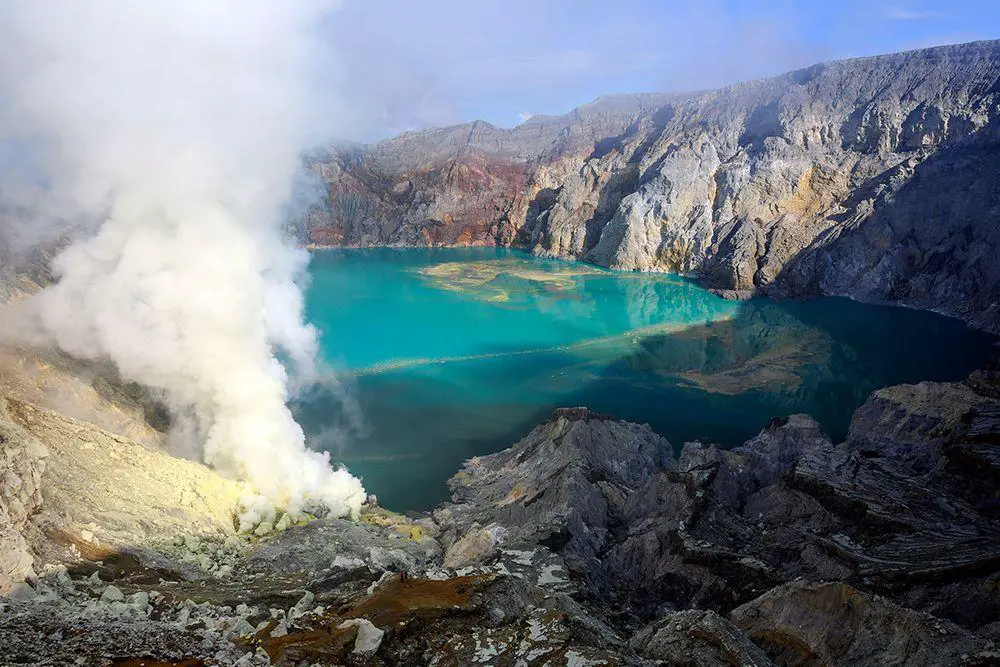
Lakes and streams
There are many factors that can make lakes, sea bays, or rivers unusual. Some lakes have unusual chemical properties and even do not contain water at all – such as lava lakes. Others may have unusual animals living in them or… legends about such animals.
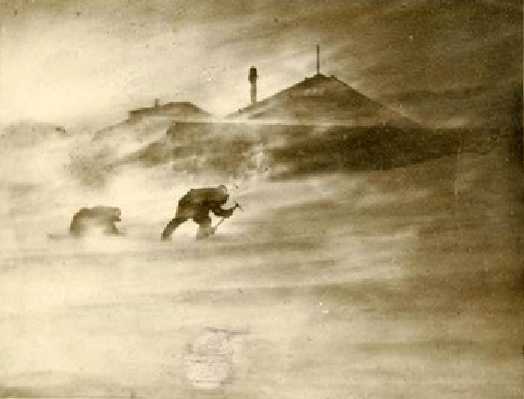
Meteorological phenomena
Unusual weather conditions can happen in any place in the world. But there are locations where unusual meteorological phenomena are observed frequently – even every day.
 Recommended books
Recommended books
Shambhala: The Fascinating Truth behind the Myth of Shangri-la
In this fascinating look behind the myth, Victoria LePage traces the links between this legendary Utopia and the mythologies of the world. Shambhala, LePage argues persuasively, is “real” and maybe becoming more so as human beings as a species learn increasingly to perceive dimensions of reality that have been concealed for millennia.
Cultural History of Uttarakhand
This is the outcome of many years of keen observation of the linguistic and cultural phenomena of the whole Himalayan region, right from Ladakh in the west to Bhutan in the east, and an intensive study of ancient Indian Literature and of the historical incidents that have taken place in these Central Himalayan regions, particularly in the land termed as Uttarakhand.

